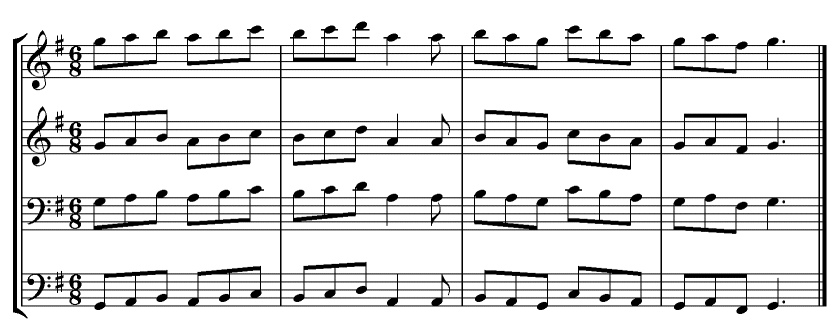



There are three intervals, their consonance aurally obvious. A ratio of the fundamental frequencies of two tones expresses what musicians call an interval. Mathematically, we can model any tone pitch as a single number, its fundamental frequency. Why are there seven different notes in an octave?-My answer (not necessarily a novelty) is, in brief: because the diatonic scale is the least populated Pythagorean scale to include every interval found in the chromatic scale.įor most of us such an answer indeed entails no end of further questions: what is a Pythagorean scale? what is the chromatic scale? the diatonic? an interval? and what makes the chromatic scale so special? Pythagorean scale(s) And thus the whole mixture out of which he cut these portions was all exhausted by him. Where there were intervals of ³⁄₂ and of ⁴⁄₃ and of ⁹⁄₈, made by the connecting terms in the former intervals, he filled up all the intervals of ⁴⁄₃ with the interval of ⁹⁄₈, leaving a fraction over and the interval which this fraction expressed was in the ratio of 256 to 243. After this he filled up the double intervals and the triple cutting off yet other portions from the mixture and placing them in the intervals, so that in each interval there were two kinds of means, the one exceeding and exceeded by equal parts of its extremes, the other being that kind of mean which exceeds and is exceeded by an equal number. For example, if the remaining interval is a major third, the compound interval is a major teenth.The diatonic scale is the least populated Pythagorean scale to include every interval found in the chromatic scale.Īnd he proceeded to divide after this manner: -First of all, he took away one part of the whole, and then he separated a second part which was double the first, and then he took away a third part which was half as much again as the second and three times as much as the first, and then he took a fourth part which was twice as much as the second, and a fifth part which was three times the third, and a sixth part which was eight times the first, and a seventh part which was twenty-seven times the first. Below is a list of compound intervals: NameĪ compound interval is found by moving the lower note up an octave and identifying the remaining interval. For example, a tenth (a compound third) can be minor or major, just like a third can be.

#Notes in an octave plus#
Or they can be named by describing both intervals, for example octave plus a third.Ĭompound intervals exist in the same qualities as the corresponding intervals smaller than an octave. They can be named according to the interval they comprise without the octave, for example, compound second and compound third. There are two alternative ways to name compound intervals. For example, a ninth consists of an octave and a second, and a tenth consists of an octave and a third. Compound intervals consist of one octave and another interval which is typically smaller than one octave.


 0 kommentar(er)
0 kommentar(er)
